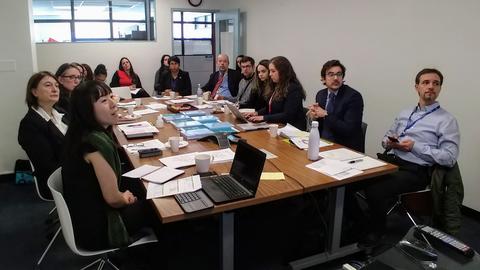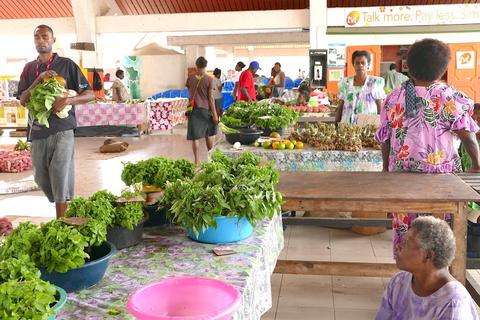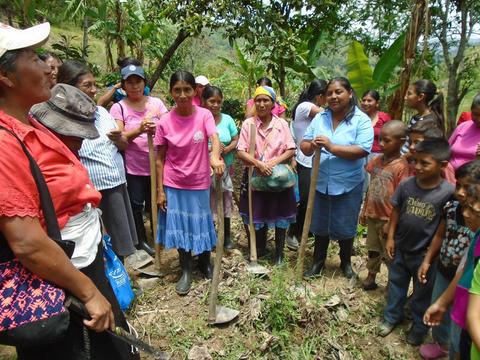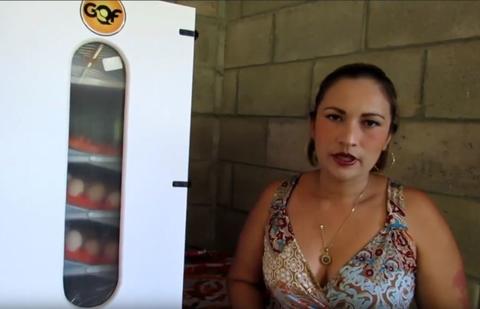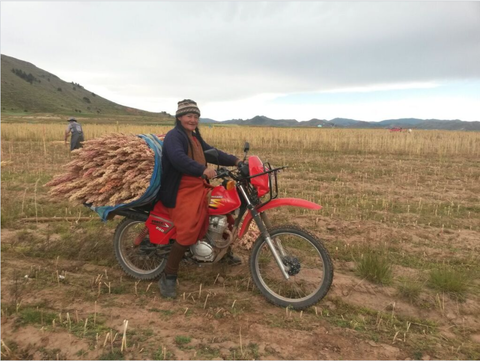April 19, 2016
In the face of the water challenge, infrastructure is no longer enough
Paloma Durán, Director of the United Nations Sustainable Development Goals Fund (SDG-F)
Water is essential for human health, food production, energy generation and raw materials, as well as for the balance of the planet's ecosystems. However, water scarcity today is a pressing problem that affects more than 40 per cent of the world’s population, according to official United Nations figures. And it is of even greater concern that different reports, including the most recent World Water Development Report prepared by UN-Water, estimate that water scarcity will continue to increase due to the effects of climate change and the overexploitation of the planet’s water resources.
Goal 6 of the 2030 Agenda for Sustainable Development calls for universal, equitable and affordable access to drinking water. It is also closely linked to Goal 2, which aims to end hunger and ensure food security for all. This requires generating enough food for an increasing population, which in 2050, will exceed 9 billion people – a water challenge considering that food production currently consumes 70 per cent of water resources used globally. If we add to this increasingly more frequent droughts and floods and increasing desertification at a rate of 12 million hectares per year, how will we face the water challenges over the next 15 years?
For years, in the field of development, the solution to the problems of water supply has been exclusively polarized in building infrastructure. The already concluded Millennium Development Goals (MDGs) concentrated on the number of people with access to water and sanitation. Accordingly, in the last decade there was an increased focus on building aqueducts, canals, wells and other improved systems for providing clean water and on mobilizing billions of dollars from bilateral and multilateral aid and development banks. This has had a very positive effect on improving the global situation. According to the joint report of the World Health Organization (WHO) and the United Nations Children’s Fund (UNICEF) on water and sanitation, 2.3 billion people worldwide gained access to safe water between 1990 and 2012, increasing the overall coverage to 91 per cent of the population.
However, experience has also shown that the works alone are not always the answer to the problem. There are numerous examples of where large investments have been lost either through abandonment or the malfunctioning of the works that were built. The lack of cultural and social relevance, weak local ownership as well as issues regarding economic and technical sustainability have often been underlying causes for this failure.
A transparent and democratic water governance is indispensable for combating the growing shortage of supply and for achieving the Sustainable Development Goals
The study conducted by UN Water for the Rio+20 Conference, Status Report on Integrated Water Resources Management, states that a comprehensive approach to water resources management is essential to move towards a green economy, sustainable development, the eradication of poverty and the creation of the natural means that are resilient to adverse climatic events. This requires that beyond investing in new water infrastructure, the key is to increase the capacities of local governance through transparent and democratic governance of water.
In the Sustainable Development Goals Fund (SDG-F), the programmes that we are implementing fulfil this vision, using an approach that promotes democratic and transparent governance systems that are integrated with climate change adaptation. A good example is our joint Pro WATER programme in the Philippines, a country in which less than 60 per cent of households treat water for drinking. This programme empowers citizens of vulnerable communities with access to sustainable safe water and sanitation services.
Through the coordinated work of United Nations agencies, local government and other partners in the region, we are encouraging the participation of women and girls in sanitation, clean water and hygiene projects. They are involved in all stages: from planning and decision-making to the monitoring and implementation phases. The final goal, in addition to improving people’s health, is to build the capacities of the local government by involving citizens in the management of drinking water, sanitation and hygiene in their communities.
The experience of the SDG-F shows how the democratization of decision-making regarding the construction, design and identification of needs in infrastructure and water resources management empowers the population and improves accountability while contributing to closing the gaps that create unequal opportunities and capacities. If we want to stand up to the growing challenge of water in the 21st century, new infrastructure is no longer enough; we must move forward in transparent governance and local empowerment.
This article was originally published Spanish in Planeta Futuro (El País),on 15 April 2016

